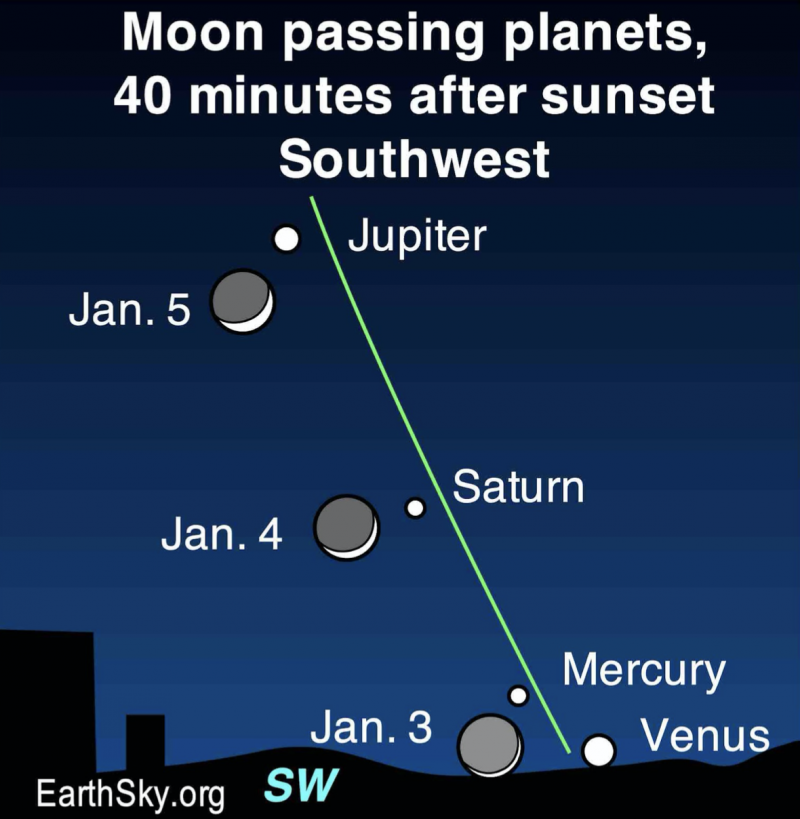
Moon and 4 planets in early January 2022
Venus spent December 2021 sliding sunward, dropping closer to the sunset point as western twilight darkens each day. As the year ends, you might catch Venus exceedingly near the sunset glare. But Venus will soon disappear entirely, for all but the most experienced and dedicated skywatchers. That’s because Venus is about to move between the Earth and sun in its smaller, faster orbit. It’ll be at inferior conjunction – nearest the Earth-sun line – on January 8-9, 2022.
At inferior conjunction, Venus will officially leave our evening sky and enter our morning sky.
You might catch Venus on January 3, as the moon sweeps past.

Mercury was nowhere to be found for most of December 2021. It was moving around the far side of the blinding sun as seen from Earth. But on the last several evenings of the year, Mercury appeared far enough from the sun on our sky’s dome to let us glimpse the planet, briefly, perhaps 30 minutes after sunset, in the sunset direction. If you want to see it in early January, you’ll need a sky that’s clear to the horizon in the sunset direction. On January 3, the thin waxing crescent moon will float near Mercury and the sunset horizon. The moon’s presence may help you find this sometimes elusive little planet.
In the first week of January 2022, Mercury will climb a little higher as it swings away from the sunset, approaching its greatest apparent distance from the sun in our sky – 19.2 degrees – on January 7. This is Mercury’s greatest eastern elongation.
Afterward, Mercury will drop closer to the horizon each evening. Much as Venus does on January 9, Mercury will fly between us and the sun on January 23. It’ll be lost in the solar glare after mid-January and for the rest of the month.
Jupiter is the second-brightest planet. As January begins, and Venus disappears, Jupiter will become the evening sky’s brightest “star.” But Jupiter is also sinking toward the sunset glare. From mid-northern temperate latitudes, by the beginning of January, it will appear near the sunset point in early evenings for only about 40 minutes after sunset.
Saturn is still near Jupiter in our sky, nearly a year after their late 2020 great conjunction. The ringed planet is fainter than Jupiter, and its faintness against a background of bright evening twilight will make it harder to spot. However, Saturn will be shining about as brightly as some of the brightest stars, such as Altair, which will be twinkling near Saturn on early January evenings.
Helping to positively identify Saturn and Jupiter, the thin crescent moon glows near them on the evenings of January 4 and 5.
Bottom line: It’ll be tough to spot Venus and Mercury near the moon in the bright western twilight on the evening of January 3, 2022. Jupiter and Saturn will be much easier to see when the moon passes on the evenings of January 4 and 5.











